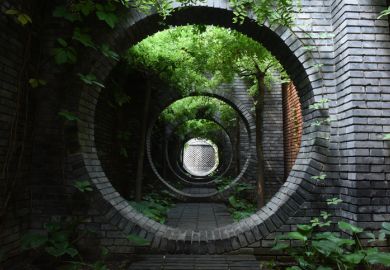Alan Cork peers into the cauldron and discovers Mother Nature's pharmacy
Be warned: the Journal of Asian Natural Products Research is not for the casual reader. Though it has the feel of a good-quality chemical journal, characterised by crisp text and well-edited English, it has no time for the niceties of language of more traditional biological journals.
The JANPR "publishes chemical and pharmaceutical studies... in the field of natural product research on Asian ethnic medicine". "Ethnic" might suggest homeopathic remedies or traditional herbal remedies, aligning the journal with what used to be described as fringe groups. This is not the case.
Much of modern medicine is based on exploitation of natural chemicals that have been found by random screening of natural products, most notably moulds such as Penicillium notatum . When molecules of sufficient importance to humans have been discovered, such as quinine, extraordinary efforts have been made to understand their mode of action. Such work is motivated by the desire to synthesise analogues that can impart higher levels of activity or achieve faster action on the target cell, organ or organism than the natural compound. Examples, such as the synthetic equivalents of pyrethroids derived from chrysanthemum spring to mind. These compounds are imbued with chemical properties that enable them to achieve fast "knockdown" of insect pests, but they often rely on other compounds to kill them.
The journal gives the impression of a hothouse of plant parts, "cauldrons" for extracting natural products, to be analysed by nuclear magnetic resonance spectrometers quietly humming in air-conditioned rooms solving the structural puzzles of the extracted chemicals. "The structure" is the holy grail for chemists, whether the molecule is bio-active or not. I trained as a chemist and can vouch for the buzz of solving such puzzles. Hermann Hesse captured the feeling beautifully in The Glass Bead Game .
The macro-molecules described in the JANPR are far from trivial, even with the structural probes available to analytical chemists today. Tuberoside M, a new cytotoxic spirostanol reported by Sheng-Min Sang, is a case in point.
The compound apparently came from the seeds of Allium tuberosum , perhaps better known as garlic chives, Chinese chives or Chinese leeks. We are told that in Chinese folk medicine the seeds are used as a tonic and apparently exhibit the much-craved properties of the elusive aphrodisiac. The authors restricted their interest in tuberoside M to its ability to inhibit the growth of human promyelocytic leukaemia cell line HL-60, perhaps a more worthwhile target. But how did they achieve the jump of logic from tonic to cytotoxic compound? They do not reveal.
Xi-Hao Li and colleagues report the identification of bioactive triterpenoids from the roots of Symplocus chinensis . Despite its toxic effects, it has apparently been applied in ethnic medicine to treat malaria, tumefaction, enteritis, nephritis and snake bites. The authors point out that previous compounds identified from the herb "could (not) explain the ethnomedical use of this plant". The paper describes the meticulous research they conducted to identify four triterpenoids, three of which had previously been isolated from other plant sources. The authors confirmed the basic structure of the fourth as similar to 24-hydrotormentic acid. A range of analytical techniques, including X-ray crystallography, verified the compound's three-dimensional structure, an additional methyl group to this acid, and one alcohol function that had a different spatial arrangement. The authors are disappointingly silent on its value in treating malaria and so on, reporting instead its activity against a "panel of cancer cell lines".
It would not be fair to suggest that the journal reports only papers on the structural identity of new compounds of natural origin. Some papers report the biotransformation of natural products into new compounds. For example, Jun-Gui Daiu, who took two taxane diterpenoids as representatives of a family of 350 compounds isolated from Taxus and transformed them in good yield to new compounds using a cell suspension culture of Platycodon grandiflorum . The justification for this work was the discovery of clinical anti-cancer activity of another member of the taxane family, paclitaxel (Taxol().
The holy grail of chemists is the discovery of new compounds, but the funding and hence the focus of much of their work as reported in the JANPR is driven by the commercial potential of anti-cancer drugs. Despite this, authors chose to publish their work in the JANPR rather than to seek patent protection for discoveries. This in part reflects the fact that much research is sponsored by public agencies, though I would like to think also that chemists publish in the JANPR to enhance our knowledge of the chemistry that underpins the biological world.
Alan Cork is reader in chemical ecology, University of Greenwich.
Journal of Asian Natural Products Research
Editor - Xiao Tian Liang
Publisher - Taylor and Francis, Quarterly
Price - Institutions £310.00 Individuals £89.00
ISSN - 1028 6020 (print) 1477 2213 (online)
Register to continue
Why register?
- Registration is free and only takes a moment
- Once registered, you can read 3 articles a month
- Sign up for our newsletter
Subscribe
Or subscribe for unlimited access to:
- Unlimited access to news, views, insights & reviews
- Digital editions
- Digital access to THE’s university and college rankings analysis
Already registered or a current subscriber?



